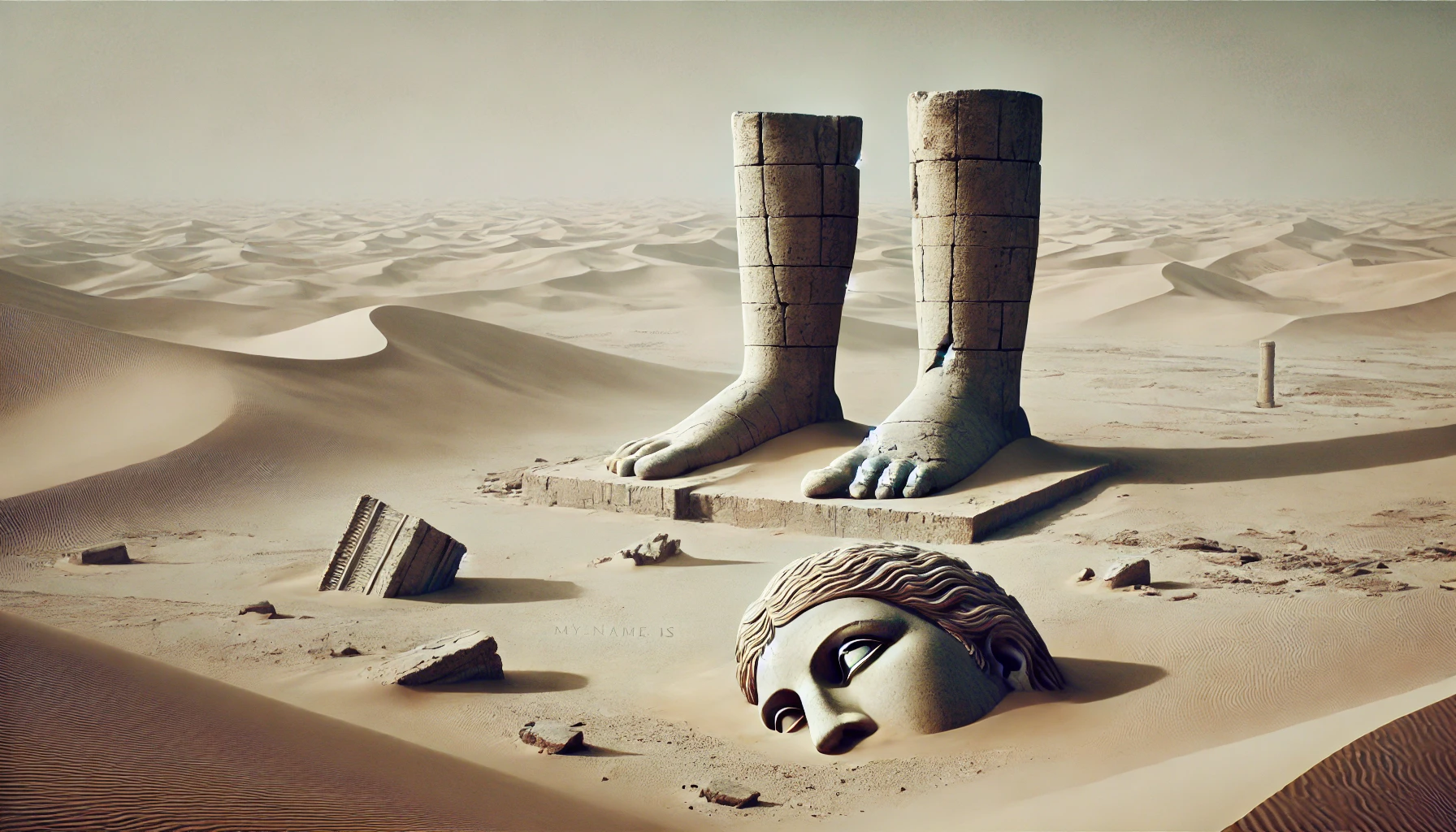Some poems linger in the mind long after the last line is read, and Ozymandias is one such piece.
At first glance, it is a simple tale: a traveller recounts the ruins of a once-mighty statue, its inscription boasting of eternal power, now surrounded by nothing but boundless sand.
Yet, beneath its brevity lies a profound meditation on impermanence, human ambition, and the power of storytelling.
I met a traveller from an antique land
Who said: Two vast and trunkless legs of stone
Stand in the desert. Near them, on the sand,
Half sunk, a shattered visage lies, whose frown,
And wrinkled lip, and sneer of cold command,
Tell that its sculptor well those passions read
Which yet survive, stamped on these lifeless things,
The hand that mocked them and the heart that fed:
And on the pedestal these words appear:
“My name is Ozymandias, King of Kings:
Look on my works, ye Mighty, and despair!”
No thing beside remains. Round the decay
Of that colossal wreck, boundless and bare
The lone and level sands stretch far away.— Percy Shelley, “Ozymandias”, 1819 edition
Why does Ozymandias strike such a deep chord with readers? For me, it resonates through multiple layers, each unveiling a truth about the world and how we remember the past.
The Inevitability of Time
One of the poem’s most striking themes is the transience of power. Ozymandias, a figure of immense authority, sought to immortalize himself through stone and inscription. Yet, time has erased his empire, leaving only broken fragments. This reminds me of my interest in history, world-building, and storytelling. Just as nations rise and fall, stories evolve, and what was once absolute is later reinterpreted or forgotten. In the games I run, the ruins of past civilizations offer mysteries to be unravelled, much like the traveller who stumbles upon Ozymandias’ fallen monument.
The Power of Storytelling
What remains of Ozymandias? Not his kingdom, not his people, not his deeds. What endures is the story—passed down through the traveller, through the poet, and now through us. This is a testament to the power of storytelling, which I cherish in creative writing and role-playing games. Whether it’s the tales recorded in my Kingmaker campaign or the journal entries chronicling in-game events, stories become the true legacy that outlives empires.
Human Hubris and Reality
Ozymandias’ inscription—Look on my Works, ye Mighty, and despair!—was once a declaration of dominance, yet in its ruin, it becomes ironic. His arrogance blinded him to the forces beyond his control. This mirrors a broader truth in history and governance: those who believe themselves invincible often fall the hardest. My interest in kingdom-building in games makes this theme especially compelling. Managing a realm isn’t just about conquest but sustainability. Those who ignore this lesson, like Ozymandias, leave behind only ruins.
The Aesthetic of Decay
There’s beauty in decay. The image of colossal ruins against an empty desert is haunting yet captivating. It reminds me of the tarnished relics and aged artefacts I’ve envisioned in my creative projects. Objects and places gain meaning through time, wear, and loss. What was once pristine and powerful becomes enigmatic and poetic, shaping how we interpret history and art.
Conclusion
Ozymandias is more than a poem about a ruined statue. It is a meditation on ambition, the passage of time, and the fragility of human achievement. It speaks to those who build worlds, explore ruins, and seek to understand what came before. Most of all, it reminds us that, in the end, what truly remains is the story itself.
What about you? What do you see in the sands of Ozymandias?


Leave a Reply